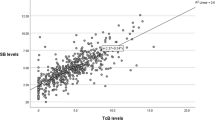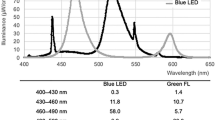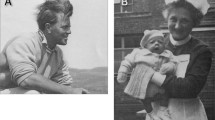Abstract
Objective:
Phototherapy is the standard therapeutic approach for neonatal hyperbilirubinemia. Oxidative effects of phototherapy may have potential harms, including DNA damage. Unconjugated bilirubin (UCB) might also possess antigenotoxic potential. Intensive phototherapy is more efficacious than conventional phototherapy in treating hyperbilirubinemia. This study aimed to assess the impact of hyperbilirubinemia and the two different types of phototherapy on DNA damage in peripheral blood mononuclear cells of neonates.
Study Design:
The study was conducted on term neonates with non-hemolytic hyperbilirubinemia and control healthy neonates. Genotoxicity was assessed using single-cell gel electrophoresis (Comet assay) in peripheral mononuclear cells. Blood samples were obtained at enrollment in all infants and after intensive or conventional phototherapy in jaundiced infants.
Result:
DNA damage did not significantly differ between jaundiced and non-jaundiced neonates (11.4±8.7 and 10.9±8.3 arbitrary units (AU), respectively, P=0.58). It increased significantly after exposure to phototherapy compared with prephototherapy values (45.6±14.7 vs 11.4±8.7 AU, respectively, P<0.001). The duration of phototherapy correlated positively with markers of DNA damage (r=0.86, P<0.001); however, the intensity of used light did not significantly impact genotoxicity.
Conclusion:
Hyperbilirubinemia does not influence DNA damage, whereas both conventional and intensive phototherapy are associated with DNA damage in term infants with hyperbilirubinemia.
This is a preview of subscription content, access via your institution
Access options
Subscribe to this journal
Receive 12 print issues and online access
$259.00 per year
only $21.58 per issue
Buy this article
- Purchase on Springer Link
- Instant access to full article PDF
Prices may be subject to local taxes which are calculated during checkout


Similar content being viewed by others
References
Dennery PA, Seidman DS, Stevenson DK . Neonatal hyperbilirubinemia. N Engl J Med 2001; 344: 581–590.
Karakukcu C, Ustdal M, Ozturk A, Baskol G, Saraymen R . Assessment of DNA damage and plasma catalase activity in healthy term hyperbilirubinemic infants receiving phototherapy. Mutat Res 2009; 680: 12–16.
Tatli MM, Minnet C, Kocyigit A, Karadag A . Phototherapy increases DNA damage in lymphocytes of hyperbilirubinemic neonates. Mutat Res 2008; 654: 93–95.
Rosenstein BS, Ducore JM . Enhancement by bilirubin of DNA damage induced in human cells exposed to phototherapy light. Pediatr Res 1984; 18 (1): 3–6.
Christensen T, Reitan JB, Kinn G . Single-strand breaks in the DNA of human cells exposed to visible light from phototherapy lamps in the presence and absence of bilirubin. J Photochem Photobiol B 1990; 7 (2–4): 337–346.
Gathwala G, Sharma S . Oxidative stress, phototherapy and the neonate. Indian J Pediatr 2000; 67 (11): 805–808.
Hoeijmakers JH . Genome maintenance mechanisms for preventing cancer. Nature 2001; 411: 366–374.
Halliwell B, Aruoma OI . DNA damage by oxygen-derived species. Its mechanism and measurement in mammalian systems. FEBS Lett 1991; 281 (1–2): 9–19.
Tozzi E, Tozzi-Ciancarelli MG, Di Giulio A, D’Alfonso A, Farello G, Spennati GF et al. In vitro and in vivo effects of erythrocyte phototherapy on newborns. Biol Neonate 1989; 56 (4): 204–209.
Vreman HJ, Wong RJ, Stevenson DK . Phototherapy: current methods and future directions. Semin Perinatol 2004; 28 (5): 326–333.
Sasaki YF, Kawaguchi S, Kamaya A, Ohshita M, Kabasawa K, Iwama K et al. The comet assay with 8 mouse organs: results with 39 currently used food additives. Mutat Res 2002; 519 (1–2): 103–119.
American Academy of Pediatrics Subcommittee on Hyperbilirubinemia. Management of hyperbilirubinemia in the newborn infant 35 or more weeks of gestation. Pediatrics 2004; 114 (1): 297–316.
Aycicek A, Kocyigit A, Erel O, Senturk H . Phototherapy causes DNA damage in peripheral mononuclear leukocytes in term infants. J Pediatr (Rio J) 2008; 84 (2): 141–146.
El Hadidi H, Huntar N, Zuyed A, El Mahgoub D, Nagui N, El Eishie N et al. The effect of PUVA phototherapy on Bcl-2 expression in Psoriasis vulgaris. J Egypt Women Dermatol Soc 2008; 5 (2): 65–69.
Cole J, Skopek TR . International commission for protection against environmental mutagens and carcinogens. Working paper no. 3. Somatic mutant frequency, mutation rates and mutational spectra in the human population in vivo. Mutat Res 1994; 304 (1): 33–105.
Moller P, Knudsen LE, Loft S, Wallin H . The comet assay as a rapid test in biomonitoring occupational exposure to DNA-damaging agents and effect of confounding factors. Cancer Epidemiol Biomarkers Prev 2000; 9 (10): 1005–1015.
Garcia O, Mandina T, Lamadrid AI, Diaz A, Remigio A, Gonzalez Y et al. Sensitivity and variability of visual scoring in the comet assay. Results of an inter-laboratory scoring exercise with the use of silver staining. Mutat Res 2004; 556 (1–2): 25–34.
Collins AR . The comet assay for DNA damage and repair: principles, applications, and limitations. Mol Biotechnol 2004; 26 (3): 249–261.
Tice RR, Agurell E, Anderson D, Burlinson B, Hartmann A, Kobayashi H et al. Single cell gel/comet assay: guidelines for in vitro and in vivo genetic toxicology testing. Environ Mol Mutagen 2000; 35 (3): 206–221.
Faust F, Kassie F, Knasmuller S, Boedecker RH, Mann M, Mersch-Sundermann V . The use of the alkaline comet assay with lymphocytes in human biomonitoring studies. Mutat Res 2004; 556 (3): 209–229.
Hartmann A, Agurell E, Beevers C, Brendler-Schwaab S, Burlinson B, Clay P et al. Recommendations for conducting the in vivo alkaline Comet assay. Mutagenesis 2003; 18 (1): 45–51.
Basu S, De D, Dev Khanna H, Kumar A . Lipid peroxidation, DNA damage and total antioxidant status in neonatal hyperbilirubinemia. J Perinatol 2014; 34 (7): 519–523.
Dani C, Martelli E, Bertini G, Pezzati M, Filippi L, Rossetti M et al. Plasma bilirubin level and oxidative stress in preterm infants. Arch Dis Child Fetal Neonatal Ed 2003; 88 (2): F119–F123.
Dani C, Masini E, Bertini G, di Felice AM, Pezzati M, Ciofini S et al. Role of heme oxygenase and bilirubin in oxidative stress in preterm infants. Pediatr Res 2004; 56 (4): 873–877.
Wu TW, Wu J, Li RK, Mickle D, Carey D . Albumin-bound bilirubins protect human ventricular myocytes oxyradical damage. Biochem Cell Biol 1991; 69 (10–11): 683–688.
Stocker R, Glazer AN, Ames BN . Antioxidant activity of albumin-bound bilirubin. Proc Natl Acad Sci USA 1987; 84 (16): 5918–5922.
Dennery PA, McDonagh AF, Spitz DR, Rogers PA, Stevenson DK . Hyperbilirubinemia results reduced oxidative injury in neonatal Gunn rat exposed in hyperoxia. Free Radic Biol Med 1995; 19 (4): 395–404.
Stocker R, Yamamoto Y, McDonagh AF, Glazer AN, Ames BN . Bilirubin is an antioxidant of possible physiological importance. Science 1987; 235 (4792): 1043–1046.
Wallner M, Antl N, Rittmannsberger B, Schreidl S, Najafi K, Müllner E et al. Anti-genotoxic potential of bilirubin in vivo: damage to DNA in hyperbilirubinemic human and animal models. Cancer Prev Res (Phila) 2013; 6 (10): 1056–1063.
Kahveci H, Dogan H, Karaman A, Caner I, Tastekin A, Ikbal M . Phototherapy causes a transient DNA damage in jaundiced newborns. Drug Chem Toxicol 2013; 36 (1): 88–92.
Yahia S, Shabaan AE, Gouida M, El-Ghanam D, Eldegla H, El-Bakary A et al. Influence of hyperbilirubinemia and phototherapy on markers of genotoxicity and apoptosis in full-term infants. Eur J Pediatr 2015; 174: 459–464.
Author information
Authors and Affiliations
Corresponding author
Ethics declarations
Competing interests
The authors declare no conflict of interest.
Rights and permissions
About this article
Cite this article
Ramy, N., Ghany, E., Alsharany, W. et al. Jaundice, phototherapy and DNA damage in full-term neonates. J Perinatol 36, 132–136 (2016). https://doi.org/10.1038/jp.2015.166
Received:
Revised:
Accepted:
Published:
Issue Date:
DOI: https://doi.org/10.1038/jp.2015.166
This article is cited by
-
What is the minimum duration of cycled phototherapy that is still effective in treating hyperbilirubinemia?
Journal of Perinatology (2023)
-
Stannsoporfin with phototherapy to treat hyperbilirubinemia in newborn hemolytic disease
Journal of Perinatology (2022)
-
Role of phototherapy, BAX gene expression in hyperbilirubinemia development in full-term neonates
Egyptian Journal of Medical Human Genetics (2020)
-
A novel accurate LC-MS/MS method for quantitative determination of Z-lumirubin
Scientific Reports (2020)
-
Comparison of end-tidal carbon monoxide measurements with direct antiglobulin tests in the management of neonatal hyperbilirubinemia
Journal of Perinatology (2020)



